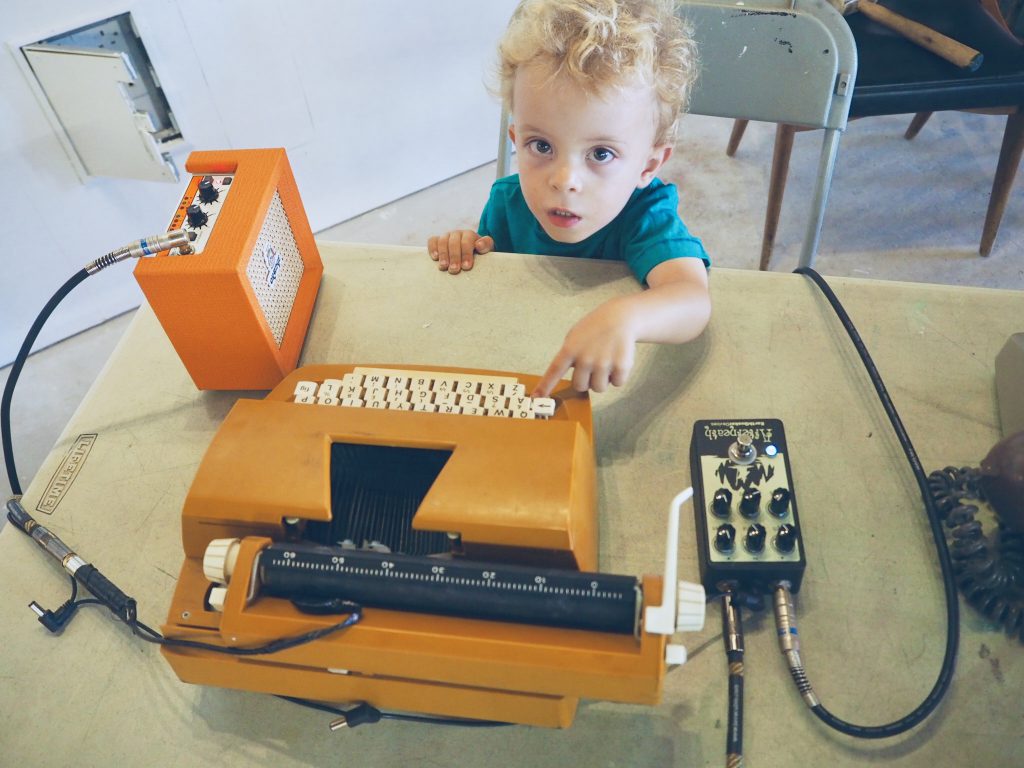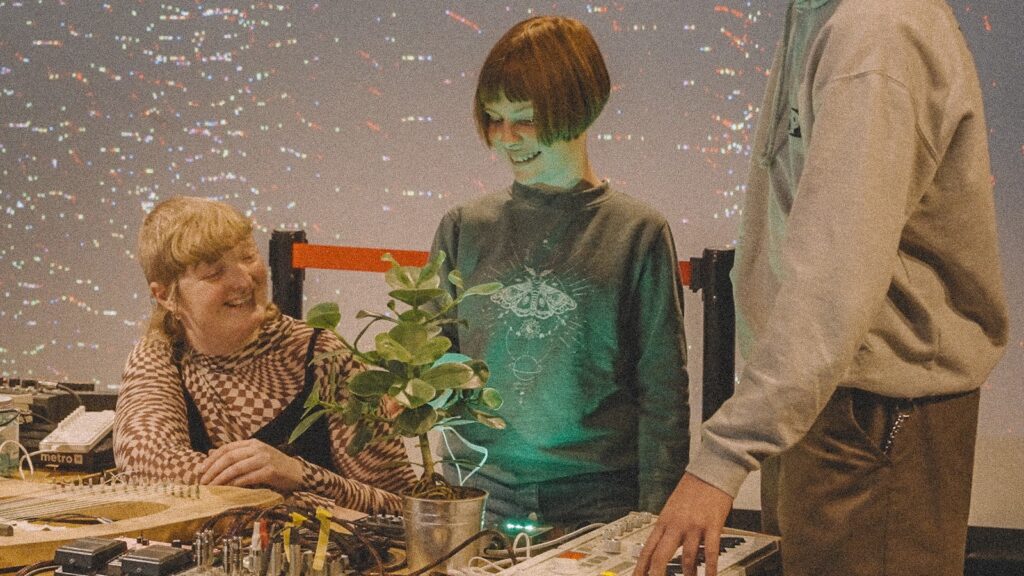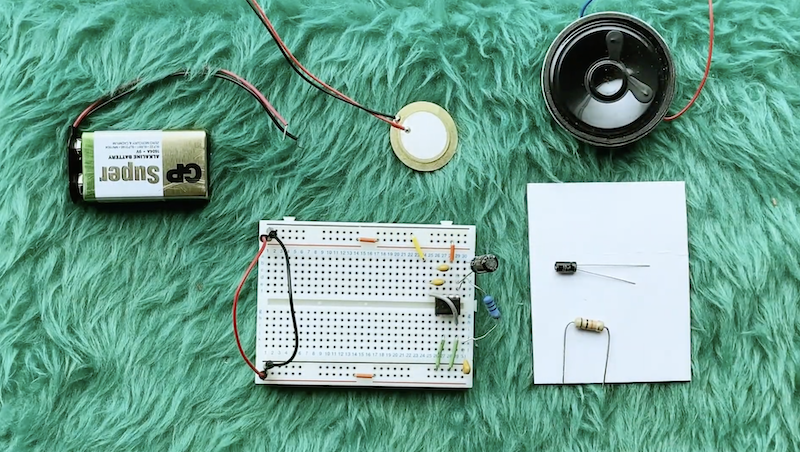A contact microphone uses something called a piezo disc (or piezo element’) – they are super cheap (less than a pound!)and super fun. When connected to an amplifier and speaker they can be used as microphones. However, singing or speaking into it won’t work. The microphones that people sing into are different because those ones pick up sound that has travelled through the air.
A contact microphone picks up sound that is made by tapping, rubbing, scraping, blowing or throwing something at an object: a piece of cardboard, some wood, a piece of sandpaper, an oven tray, or the top (skin) of a snare drum.
Build a super cheap contact microphone instrument
What you will need (electronic components available from rapidonline.com):
- A piezo disc (or ‘piezo element’)
- A battery powered amplifier with a speaker attached (see instructions for ‘build your own amplifier’)
- Two crocodile leads with a wire attached to one end of each lead (one red or orange, one black or blue)
- A piece of card
- Electrical tape, Blu-Tac, glue, Sellotape
- A tiny cardboard box
- Assorted items from around the house (not electrical items): sandpaper, screws, trays, cotton wool, a tin etc.
Instructions:
- To prepare the contact mic, make the wires longer. Do this by adding a crocodile lead (with a red or orange wire attached to one end) to the bare metal part of the red wire on the piezo disc. Do the same with the other crocodile lead, but this time use black or blue colours and attach it to the black wire on the piezo disc.
- Now let’s simply see what a contact mic sounds like on it’s own.
- Raise the speaker off your table with a small empty box (otherwise it might create a horrible screechy ‘feedback’ noise)
- The red/orange wire from one of the crocodile leads (that you’ve just connected to the piezo disc) is your ‘output’. Attach it to a hole in the ‘input’ column on your amplifier’s breadboard (on our breadboard amplifier, this will be the same column as the resistor that comes out to the right – ours is the lower section of column 15)
- We’ve shown a contact mic (without crocodile leads) being attached in our instructions for ‘build your own amplifier – refer to that if you are unsure of where to connect it
- The other wire coming from the contact mic (via a crocodile lead) goes to a hole on the very bottom row of the breadboard (where you will be attaching the black wire of your battery in a moment)
- Attach the red wire from the battery to the very top row of the breadboard, and the black ‘ground’ wire to the very bottom (‘ground’) row of the breadboard.
- Tap, rub, or blow the table near your contact mic to see what sounds can be made.
- A table doesn’t make many different sounds, so try attaching your contact mic to a piece of card (with electrical tape or Blu-Tac) and Sellotape or glue a piece of sandpaper to the card – notice the different sound made by rubbing cardboard and rubbing sandpaper. You could try using a brush or cotton wool to gently rub the surface. You could blow on the card. Try attaching the contact mic to different surfaces or objects (not electrical) – an oven tray, a tin with paper clips inside. Sprinkle sand on the surface near the contact mic.
- Our favourite thing to do is attaching it to the back an old typewriter and then typing.
https://www.instagram.com/p/BlQPDWdnV64/
This tutorial is part of the co:noise project, which has been funded by Arts Council England, FEAST, Cornwall Council, Penryn Town Council, Tea Social and Rapid Online. co:noise is a project designed to encourage people of all ages and musical backgrounds to make music. In this series of tutorials, we are providing instructions and ideas to make easy to build, low cost electronic instruments without needing to solder.
All components can be found on the Rapid Online website.




